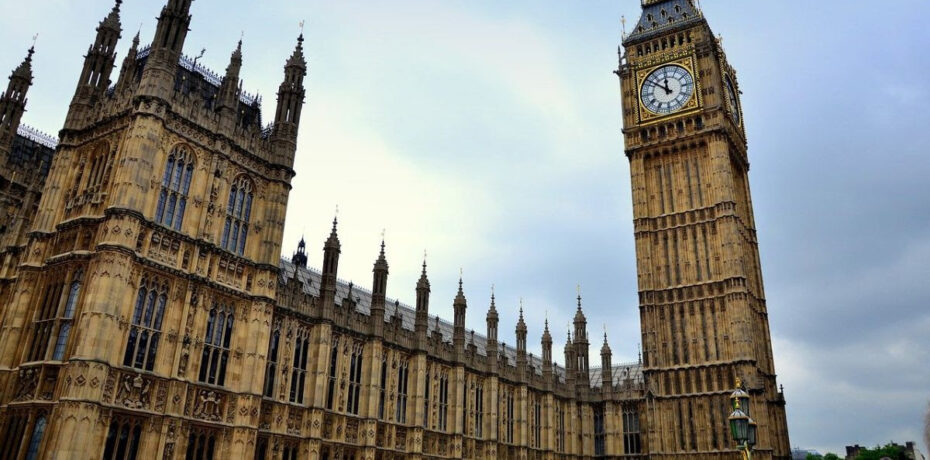The Subplot
The Subplot | Freeports, flexible floorspace, financing hotels
Welcome to The Subplot, your regular slice of commentary on the North West business and property market from Place North West.
This week: will a Liverpool freeport with tentacles extending into Greater Manchester become a regional game-changer? With WeWork pondering a return to the acquisitions trail in Manchester, how will the flexible office sector make money and who will make it? Meanwhile, Subplot takes a look at property industry donations to politics, and examines the tightening investment criteria for hotels.

FREEPORT FIZZLE
Déjà vu all over again
Bids for the UK’s first 10 next-generation freeports closed on Friday, with Liverpool among them and a Greater Manchester site included. Would it deliver for the city-region and the wider North West, or would land supply issues screw it up?
Freeports are the latest offspring of the familiar policy mix of light-touch regulation and low-tax opportunity. The novelty is that, for customs purposes, the freeport is outside the UK. Import duties are due only once goods leave the zone to enter the UK, making it convenient for manufacturers. The Treasury has suggested freeports could be big, perhaps up to 780 square miles, though not all of that space would enjoy either the tax benefits, or the customs benefits. Distant factories and transport terminals can be looped in, provided they aren’t outside the wider boundary.

The Liverpool bid
There were a handful of potential North West bids, including Carlisle and a Greater Manchester option involving Manchester Airport. By last Friday, they had mostly fizzled out and Liverpool was the only serious contender left standing. The Liverpool City Region bid hasn’t had an easy birth: Sefton, in whose area much of the port lies, declined to take part due to worries about increased HGV traffic. The bid proposes a multi-gateway, multi-modal freeport including the main port, and links to the ship canal, rail-enabled sites, and airport. The aim is to focus on the automotive, biomanufacturing and chemicals sectors.
The sites, listed
The “primary customs site” would be located within the Port of Liverpool, and the customs sites scattered where they could be useful (including inside the “tax sites”, multi-modal gateways, and key businesses and clusters). The “tax sites” are where new development can take place, and they include Peel’s Wirral Waters where there is scope for a 1m sq ft marine, energy and automotive park; Langtree’s Parkside, St Helens where another 1m sq ft is planned, and Stobart’s 3MG, Widnes where 430,000 sq ft currently has permission. Peel L&P told Subplot that its 1.5m sq ft Port Salford multi-modal terminal is also included in the bid, despite it being in Greater Manchester. Reports early last year suggested an annual potential boost to local GVA of £739m a year, but that was before the bid was prepared or the rules agreed, so can be taken with a pinch of salt.
The downside
Cllr John Merry for Broughton Ward is watching from the other end of the Manchester Ship Canal. The former leader of Salford City Council is chair of Key Cities, the group of 24 second-tier cities that includes Salford, Preston, Lancaster and Carlisle. Merry says: “Freeports are not a massive game-changer. [This one] won’t change the North West economy, although there are some pluses if it is run the right way. We need to see them generate new economic growth rather than simply shifting it from outside the boundary to inside. That is a major concern.” This view has support from the UK Trade Policy Observatory at the University of Sussex, which flags up the risk of boundary hopping, with the result that the net additional job count would be relatively low. Freeports also have a dubious worldwide reputation as hubs for criminal activity.
The land problem
Smuggling isn’t the only problem. Freeport rules mean that the “tax sites” (which are supposed to appeal to developers) should be large. Each freeport is allowed up to three tax sites of between 48 and 480 acres each. HM Treasury is not messing around with small sites, which makes its life easier, but the effect might be to slow down development because big sites are big trouble, particularly around ports.
More land problems
Things could be slow in any case, because suitable industrial sites are a rarity thanks to a late but welcome surge of interest in Merseyside industrial floorspace, says Jon Thorne, director at agency B8 Real Estate. Thorne says: “I’ve let 600,000 sq ft in the last six months, we have another 400,000 sq ft in solicitors’ hands; that’s a lot. In normal times, over the same period, we might expect half as much, or maybe only a third as much.” In the meantime, regional sites are trapped in the planning system (see Subplot, 26 January) and there’s not a lot left. Thorne says: “There just isn’t the land. If demand for floorspace increases, where will we put it? And you need sites that are ready,” he says. “Sefton hasn’t one site, really. Halton has a couple. If occupiers want to massively increase their supply chain through Liverpool, where do they go?” Thorne has a good point. Wirral Waters is too tight for big sheds, and at present rates of consumption, the remaining 1.5m sq ft of “tax site” development, plus the balance at Port Salford, won’t take long to get eaten.
Money not a worry
The good news is that private capital is likely to smile on the prospect of development. Inspired by the sale of 200,000 sq ft of units occupied by AstraZeneca in Speke to US-based Realty Income at an asking price of £19m last year, overseas investors have now joined local and national players sniffing out opportunities in the city region. Simon Wood, director at B8, says: “Everyone wants more exposure to the industrial sector. We’ve done £100m worth of deals in the city region in the last year, to people who wouldn’t normally have come here had it not been for the confidence generated by the occupational market and infrastructure investment.”
Conclusion: The government is expected to allocate one freeport to each region so Liverpool’s chance of winning is high. What happens next is probably more about land supply.
DRIVING THE WEEK
 Flex bend snap?
Flex bend snap?
A lot of hopes are pinned on flexible workspace. With around 400,000 sq ft of requirements still circling an overcrowded Manchester market, and talk that WeWork will resume its growth path in the city later this year, can flex and co-working make money for operators, and landlords?
Last month saw Convene, a fancy US flexspace operator, rethink plans to take long leases on 170,000 sq ft of prime London office stock. The retreat was probably the final stage in the row-back from what proved to be a deeply flawed business model, one that nearly cost WeWork its life. From now on, flex workspace will be operated under management agreements (much like hotels), or by landlords under their own steam via their own brand or white-label arrangements.
More to come
Subplot’s canvas of market movement suggests as many as a dozen London-based flex operators are looking to get into the Manchester market, adding up to around 400,000 sq ft. There is growing chatter that WeWork will further scout the Manchester market early next year under its new more profit-focused management. Meanwhile, the list of potential landlord hosts is diminishing every day, as they sign operator agreements with rivals, get warned off by investors, or launch their own in-house operations, as have Allied London and Bruntwood. So what gives? Can this sector make money?
The Hana model
Hana is the poster-child for the new wave of flexspace operators. Hana, a subsidiary of CBRE Group, is to open a second location in Manchester totalling approximately 32,000 sq ft at Barings’ Landmark 180,000 sq ft development. It follows a differently structured deal to take 26,000 sq ft at Fore Partnerships’ 78,000 sq ft Windmill Green. Its offers include co-investing and management agreements and what it calls “an asset-light approach”. Hana at Windmill Green is a hybrid agreement, meaning a partnership lease with a portion of net rent plus revenue share. Unfortunately, management agreements or landlord-operated flexspace messes up valuations and yield calculations. Jonathan Cook, CBRE’s North West head of flexible offices, says: “The capital markets get twitchy if the flex space is over 10-15% of total floorspace. That proportion will change over time, because it has to. Investors know the market has to adapt because leases are already down from a minimum of five years to just two, so we can’t ignore this.”
Doing it themselves
If landlords do not expect to trade their building anytime soon, then they don’t need to worry so much about what investment markets think. They could operate their own flex workspace, although this comes with the potentially large upfront cost of fit-out. A £30/sq ft fit-out probably wouldn’t cut it in all but the most basic, or suburban, locations. Many pitch themselves between £50-£70/sq ft, roughly the equivalent of the two-year rent-free period landlords might have had to give tenants anyway. It gets more challenging if costs race up to £120-140/sq ft, roughly the price of creating the latest sleek New York-style look. Fit-out costs at this level impact on cashflow in a way rent-free periods do not.
Doing it properly
It takes human resources, too. Even those landlords with large in-house teams and plenty of experience find it a challenge. Andrew Butterworth, commercial director at Bruntwood Works, says: “It is hard work making it profitable, you have to be all over it and really focus on customer service. If the coffee isn’t there it’s a problem – it is hard work. To make it profitable is a challenge.” The answer is to see the investment as part of a wider programme of updating and futureproofing assets, such as Bruntwood Works’ Pioneer programme. For many landlords, their position on the risk-reward spectrum will continue to make launching their own flexible or white label operation unappealing.
Blurred vision
The market is already smudging the boundaries between conventional, hybrid and flex. At the same time the market is getting tighter, with a growing realisation that some underperforming flex operators will need weeding out. Richard Lace, director at OBI, says: “There’s demand from operators, but probably more caution from landlords. So I’m not sure if that demand can be met. Today operators need to make a compelling story to landlords, and there are fewer and fewer landlords with whom you can have those kinds of conversations because they are cautious about the money, the structure of the deal, and who the operator is.”
The unknown unknown
So much in the flex office market will depend on one unknowable figure: how much office space, already let or spoken for, is returned to the market by occupiers who decide post-pandemic working practices mean they no longer need it. Much of that space could find its way into the flexible sector, via sublets or through landlords. Bruntwood Works’ Butterworth says: “Everything depends on how much space we get back from customers who don’t need it. That’s the issue. And we still don’t know what that number will look like.” Early indications are it could be big. The Deloitte letting at Federated Hermes’ Hanover House set an alarming precedent: it took just 35,000 sq ft, replacing a 67,000 sq ft suite at Harman Street. Similarly, Grant Thornton halved its 25,000 sq ft at Hardman Square when it took 13,000 sq ft at Baring’s Landmark.
Known unknown
Everyone agrees flexible workspace is here to stay, and here to grow. Paddy Kennedy, regional flexible workspace consultant at Colliers International and one of those instrumental in the Hana deals, says: “Maybe flex spaces account for 6% of total Manchester commercial real estate today, up from 5% two years ago, and it will reach 7-8% before too long.”
Conclusion: Landlords will sit tight with existing flex tenants and underperforming operators this year, but in 2022 many will be replaced by in-house offers and new arrivals from London’s flex sector. Whether it can pay quickly or easily for landlords remains to be seen.
IN CASE YOU MISSED IT…
 Hotel development peaks, probably
Hotel development peaks, probably
Investors’ love affair with hotels isn’t quite over, but it has cooled. New data published today by the former Cass Business School shows lenders and investors narrowing the list of operators they will consider.
Pipeline bulging
Deloitte’s Crane Survey, published last week, showed a remarkably large and resilient Manchester hotel sector. The figure of 2,400 Manchester hotel beds in construction during 2020 was only marginally down on 2019’s total, and decently above the 1,963 under construction in 2018. For comparison, the Birmingham figure never rises above 523. Completions in 2020 were minimal, just 784, which means the pipeline is bulging and will deliver plentifully in the next two years.
Computer says ‘no’
But that, probably, will be the peak. Cass Business School (now confusingly renamed just “Business School”) says that during the first half of 2020, average lender targets on interest coverage ratios increased to an average of 2.2 times income and earnings before interest, taxes, depreciation, and amortisation (EBITDA) post-furniture, fittings and equipment. Some lenders, however, require four times, especially for managed hotels with no, or a weaker, brand association. Couple this with hotel senior lending margins increasing to 305 basis points, from 270bps in the first half of last year, and it all adds up to the money tap being turned off for many projects. Business School says the most liquidity lies in the lending market between £50m and £100m, which will put many North West projects out of play.
IN CASE YOU ALSO MISSED THIS…
Property meets politics: donation data revealed
With mayoral elections coming up in both Greater Manchester and the Liverpool City Region, which property names are making donations to politicians in the North West?
It used to be assumed that if North West property had a colour, it was light blue. This turns out to be wrong. Disappointed Labour leadership contender Lisa Nandy and successful deputy leadership candidate Angela Rayner have some influential backers in the region’s property business.
Everyone loves Lisa
Electoral Commission records show that Bruntwood’s chief executive Chris Oglesby (in a personal capacity) and former Manchester City Council chief executive Sir Howard Bernstein were among Nandy’s backers when she stood as Labour leader. The Wigan MP and shadow foreign secretary received £2,000 from Oglesby in March, and £3,000 from SHB in January 2020. Nandy also received £8,000 from Innovation in Housing, which sounds like a property business. The name has since been changed to The Renaissance Project, controlled by Shoosmith’s real estate partner Vaqas Farooq and registered to an address in Macclesfield.
Angela gets support
Rayner, deputy Labour leader and MP for Ashton-under-Lyne, received £10,000 from Intro Developments in March last year. Intro’s website reveals absolutely nothing, except an address at MCR Property’s Universal Square, Ardwick. Companies House adds a little more, showing that MCR boss Aneel Mussarat, a repeated Labour donor, is a person with significant control of Intro Developments along with Mrs Naeem Kauser. Alderley Edge-based Emerson Developments Holdings made a £5,000 donation to Tatton Conservatives in October 2020: Emerson has been a regular supporter for many years.
As yet, Electoral Commission records show that neither mayors Burnham nor Rotheram have received any donations to their re-election campaigns from the property business. But there are still several months to go until polling day. Subplot will keep you posted.
The Subplot is brought to you in association with Cratus, Bruntwood Works and Savills.






Why hasn’t Manchester Airport or MCC put a proper bid together to make it a Freeport, do they not think it is worth it? I believe they did have it until 2012.
By Bob